Rattlers on the move
Rattlesnakes… They seem to pop up everywhere here in Tucson, Arizona. You see them in parking lots, trails, your backyard, and some even get INTO the house! Unfortunately these venomous reptiles are way too common, and this time of year we see multiple patients for rattlesnake treatment.
On average, in the peak of rattlesnake season our clinic may see 1-2 rattlesnake bites a week; the emergency centers in the Tucson area see even more. Dogs and cats are very curious animals, especially when they see movement under a bush or when they hear the sound of a rattle.
The most common location of snake bites on a dog is on the muzzle or leg. Cats are less likely to be bitten because they are usually indoor pets. However, we are currently treating a young cat right now for a rattle snake bite located in his right armpit. He has been hospitalized multiple days due to tissue necrosis.
Know the “enemy”
Rattlesnake venom is designed to immobilize the prey. The venom digests affected tissues. It destroys red blood cells, disrupts clotting, and damages nerves.
It is possible for up to 1/3 of a pet’s body fluid to be lost into the tissue spaces within several hours, which can result in life-threatening drops in blood pressure resulting in shock. – Shea Cox, DVM
The severity of the bite is influenced by multiple factors:
- Aggressiveness and motivation of rattlesnake – the more threatened they feel, the more concentrated the venom.
- Size of pet that has been bitten
- Location of bite
- Time elapsed since the bite occurred
- Amount of physical activity after the bite has occurred
A common misconception is that rattlesnakes dig their own holes. They actually find shelter in preexisting shelters such as abandoned burrows of other animals, brush or woodpiles, rock crevices, or any tight place where a snake can feel safe. Snakes are often found basking in open during the day. Baby snakes turn up in odd places like swimming pools, houses, or potted plants because they have not established a home territory yet.
Baby rattlesnakes are unable to control the amount of venom injected when they bite causing them to be considered more lethal than adults. Exercise great caution when hiking on trails with your pet. Snakes will lay out on open trails basking in the sun. They’re designed to blend in with their surroundings. You may not realize you and pet are walking up to danger before it is too late.
Minimize Rattlesnake Appeal
Rattlesnakes are attracted to vital resources: Shelter, food, and water. Your backyard may be a perfect environment for a snake to live. Considering the following list of rattlesnake appeal.
- Pack rats – Clear out any pack rat nests you come across around your home
- Swimming pools
- Wood pile
- Bird feeders
- Rodent holes – snakes will burrow in these holes and the rodent scent attracts them.
Visit this link for more information on rattlesnake deterrents: http://tucsonherpsociety.org/LWVR.pdf
Read the signs
In most situations a dog or cat may recieve a rattlesnake bite when their owner is not around. Be informed on the symptoms of this deadly bite so you are prepared to act as soon as possible.
- Swelling
- Puncture marks
- Bruising or skin discolration
- Intense pain at the site of the affected area
- Collapse
- Respiratory distress if swelling is affecting airways
- Vomiting
- Muscle tremors
Keep calm and transport!
All rattlesnake bites should be considered severe and victims should be kept calm and be transported to a veterinary hospital as soon as possible. Exercise caution when moving your pet, they are most likely going to be in a great amount of pain and could bite you.
- DO NOT CUT INTO THE BITE.
- DO NOT TRY TO SUCK OUT THE VENOM.
- DO NOT APPLY ICE. (Despite your reflex to treat the swelling, ice will aggravate the problem.)
- DO NOT APPLY HEAT.
- DO NOT APPLY A TOURNIQUET.
- DO NOT GIVE THE ANIMAL ANY MEDICATION.
There is hope!
The majority of healthy adult pets will survive a rattlesnake bite if treated immediately.
Treatment includes:
- Pain management is critical and a pain injection may be given immediately.
- IV catheter is placed for administration of IV fluid therapy replacing blood volume that has or will be leaking into the tissues surrounding the bite location.
- Blood tests to assess the patient’s ability to clot blood are performed. When necessary, plasma is administered in order to reintroduce coagulation factors into the patient’s blood stream.
- Antivenin is administered via IV catheter and your pet is closely monitored for the next 12-72hrs depending on severity.
- Wound monitoring – Antibiotics may be needed if the tissue affected becomes infected. There is high potential for the tissue surrounding the bite to die (necrose) and the dead tissue may need to be removed.
You may have heard of the rattlesnake vaccine
We at Adobe Vet Center do not recommend this vaccine. Even though the company that manufactures this vaccine has given data indicating the safety of the vaccine, they have not provided any challenge data indicating that the vaccination is effective. We do not know if this vaccine provides enough antibodies to protect against the venom.
We also are uncertain if those antibodies remain the dog’s blood if the dog is capable of producing antibody fast enough to have beneficial effects if a bite occurs. Finally, the vaccine manufacturer recommends that dogs that are bitten by a rattlesnake should receive the same treatment mentioned above even if vaccinated. You pet MUST receive treatment even if it has been administered this vaccine prior.







